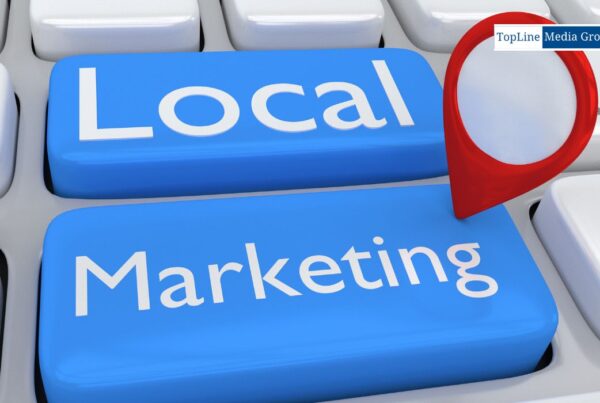In today’s competitive landscape, where consumers are bombarded with endless options, standing out in the food and beverage industry requires more than just offering delicious products.
It demands strategic and captivating content marketing that not only tempts taste buds but also drives sales.
In this comprehensive guide, we delve into the intricacies of content marketing tailored specifically for the food and beverage sector.
Introduction to Content Marketing
Content marketing isn’t just about creating promotional material; it’s about crafting compelling narratives that resonate with your audience.
In the food and beverage industry, where sensory experiences play a pivotal role, effective content marketing goes beyond showcasing products—it tells stories, evokes emotions, and creates lasting impressions.
Target Audience Identification
Understanding your audience is paramount in crafting content that resonates.
For food and beverage brands, this means delving deep into consumer preferences, behaviors, and trends.
Whether targeting health-conscious millennials or indulgence-seeking foodies, pinpointing your audience allows for tailored content that speaks directly to their desires.
Content Strategy Development

A successful content strategy begins with clear goals and objectives. Are you looking to increase brand awareness, drive website traffic, or boost sales?
Defining your objectives helps shape the direction of your content marketing efforts. Additionally, crafting a unique selling proposition (USP) sets your brand apart in a crowded market, highlighting what makes your products or services unique.
Researching trending topics and keywords is another essential aspect of content strategy development.
By staying abreast of industry trends and consumer interests, you can create content that remains relevant and engaging.
Types of Content in Food and Beverage Marketing
Variety is key when it comes to content creation in the food and beverage industry.
Visual content, such as mouthwatering photography and immersive videography, allows consumers to envision themselves enjoying your products.
Written content, including blogs, articles, and recipes, provides valuable information and establishes your brand as a thought leader in the culinary space.
Interactive content, such as quizzes, polls, and contests, encourages engagement and fosters a sense of community among your audience.
Creating Engaging and Shareable Content
Storytelling lies at the heart of effective content marketing for food and beverage brands. Whether recounting the origins of a beloved recipe or showcasing the craftsmanship behind your products, storytelling humanizes your brand and fosters connections with consumers. Additionally, incorporating user-generated content amplifies your brand’s reach while showcasing authentic interactions with your products.
Leveraging emotions and experiences is another powerful strategy for creating engaging content.
Whether evoking nostalgia with a childhood favorite or inspiring wanderlust with exotic flavors, tapping into emotions creates memorable experiences that resonate with your audience long after they’ve interacted with your content.
Utilizing Social Media Platforms
Social media platforms serve as invaluable tools for food and beverage brands to connect with consumers on a personal level.
Choosing the right platforms based on your target audience demographics and preferences ensures maximum impact.
Visual-centric platforms like Instagram and Pinterest are ideal for showcasing culinary creations, while platforms like Twitter and Facebook offer opportunities for real-time engagement and customer service.
Implementing strategies such as user-generated content campaigns, influencer partnerships, and behind-the-scenes glimpses into your brand’s story humanizes your brand and fosters meaningful connections with your audience.
Search Engine Optimization (SEO) for Food and Beverage Content

In an increasingly digital world, optimizing your content for search engines is essential for improving visibility and driving organic traffic to your website.
Conducting keyword research to identify relevant terms and phrases allows you to tailor your content to match what consumers are searching for.
Additionally, optimizing website and blog content with meta tags, headers, and alt text enhances discoverability and improves search engine rankings.
Local SEO is particularly important for food and beverage businesses with physical locations. Optimizing Google My Business listings, local directories, and geo-targeted keywords helps ensure that your brand appears prominently in local search results, driving foot traffic and increasing sales.
Email Marketing Strategies
Email marketing remains a powerful tool for nurturing customer relationships and driving sales in the food and beverage industry.
Building an email list allows you to communicate directly with your audience, delivering personalized content and exclusive offers straight to their inbox.
Crafting compelling subject lines and content is key to driving engagement and conversions. Whether announcing new menu items, sharing recipes, or offering discounts, tailoring your email content to meet the needs and interests of your subscribers increases open rates and click-through rates.
Personalization is another effective strategy for maximizing the impact of your email marketing efforts.
Segmenting your email list based on factors such as purchase history, demographics, and preferences allows for targeted messaging that resonates with individual subscribers.
Collaborations and Partnerships
Collaborating with influencers, bloggers, and other brands can amplify your content marketing efforts and expand your reach within the food and beverage community.
Partnering with influencers who align with your brand values and target audience allows you to leverage their credibility and influence to promote your products authentically.
Cross-promotional partnerships with complementary brands offer opportunities for mutual benefit, allowing you to tap into each other’s audiences and reach new customers.
Whether co-hosting events, sharing content, or offering joint promotions, collaborations enable brands to pool resources and maximize exposure.
Hosting joint events and giveaways with influencers or other brands fosters engagement and excitement among your audience while generating buzz around your products.
Whether hosting a virtual cooking class, partnering with a local charity for a fundraiser, or organizing a social media contest, creative collaborations create memorable experiences that resonate with consumers.
Content Distribution Channels
Maximizing the reach and impact of your content requires strategic distribution across various channels.
Leveraging content distribution networks (CDNs) allows you to reach a broader audience by syndicating your content across multiple platforms and websites.
Exploring paid advertising options such as social media ads, display ads, and sponsored content can help amplify your reach and drive targeted traffic to your website.
Whether using pay-per-click (PPC) advertising to promote new products or sponsoring content on relevant blogs and websites, paid advertising enables brands to reach specific audience segments and achieve measurable results.
Maximizing organic reach through strategic sharing and promotion is another essential aspect of content distribution.
Whether sharing content on social media, optimizing for search engines, or participating in online communities and forums, proactive promotion ensures that your content reaches the right audience at the right time.
Measuring and Analyzing Content Performance
Tracking and analyzing the performance of your content marketing efforts is essential for optimizing results and achieving your business objectives.
Key performance indicators (KPIs) such as website traffic, engagement metrics, and conversion rates provide valuable insights into the effectiveness of your content.
Using analytics tools such as Google Analytics, social media analytics platforms, and email marketing software allows you to track and measure the performance of your content across various channels.
By monitoring KPIs and analyzing data trends, you can identify areas for improvement and refine your content strategy accordingly.
Iterating and optimizing content based on data insights is key to driving continuous improvement and maximizing ROI.
Whether adjusting content formats, refining messaging, or targeting different audience segments, data-driven optimization ensures that your content remains relevant, engaging, and effective.
Challenges and Solutions
While content marketing offers tremendous opportunities for food and beverage brands to connect with consumers and drive sales, it also presents its fair share of challenges.
From navigating shifting consumer preferences and trends to managing limited resources and budgets, brands face a myriad of obstacles on their content marketing journey.
Overcoming content creation hurdles requires creativity, resourcefulness, and a willingness to experiment.
Whether streamlining workflows, outsourcing tasks to freelance creatives, or repurposing existing content, finding solutions to content creation challenges allows brands to maintain a consistent presence across channels and engage their audience effectively.
Dealing with budget constraints and resource limitations is another common challenge for food and beverage brands, particularly small businesses and startups.
While it’s true that effective content marketing often requires investment in time, talent, and resources, there are still plenty of cost-effective strategies that brands can employ to achieve their goals.
Whether focusing on high-impact activities with a proven return on investment or leveraging free or low-cost tools and platforms, strategic budget allocation and resource management can help brands maximize the impact of their content marketing efforts without breaking the bank.
Addressing content fatigue and audience saturation is another challenge that food and beverage brands must contend with in an increasingly crowded digital landscape.
With consumers bombarded with an endless stream of content vying for their attention, breaking through the noise and capturing their interest requires creativity, authenticity, and strategic targeting.
Whether experimenting with new content formats, exploring niche audiences and communities, or incorporating interactive elements to foster engagement, brands must continually innovate and adapt their content marketing strategies to remain relevant and resonate with their audience.
Future Trends in Food and Beverage Content Marketing
As technology continues to evolve and consumer preferences shift, the landscape of food and beverage content marketing is poised for continued innovation and transformation.
Embracing emerging technologies such as virtual reality (VR) and augmented reality (AR) opens up exciting new possibilities for immersive brand experiences and interactive storytelling. Whether creating virtual tasting experiences, offering AR-enhanced product demonstrations, or gamifying the shopping experience with interactive mobile apps, brands can leverage technology to engage consumers in entirely new ways and differentiate themselves from the competition.
Harnessing the power of artificial intelligence (AI) presents another significant opportunity for food and beverage brands to deliver personalized, data-driven content experiences.
Whether using AI-powered recommendation engines to suggest recipes based on dietary preferences and ingredient availability or leveraging machine learning algorithms to analyze consumer behavior and optimize content delivery, AI enables brands to deliver more relevant, timely, and impactful content experiences that resonate with their audience on a deeper level.
Adapting to changing consumer preferences and market dynamics is essential for staying ahead of the curve in the fast-paced world of food and beverage content marketing.
Whether responding to shifts in dietary trends, embracing sustainability and ethical sourcing practices, or tapping into emerging cultural movements and social causes, brands must remain agile and adaptable to meet the evolving needs and expectations of their audience.
Conclusion
In conclusion, content marketing holds immense potential for food and beverage brands to captivate audiences, foster meaningful connections, and drive sales.
By crafting compelling narratives, leveraging visual storytelling, and embracing emerging technologies, brands can create memorable experiences that resonate with consumers and differentiate themselves in a competitive market.
By understanding their audience, defining clear objectives, and continuously optimizing their strategies based on data insights and industry trends, brands can unlock the full potential of content marketing to tempt taste buds and drive sales in the dynamic and ever-evolving world of food and beverage.
FAQs
What is content marketing, and why is it important for the food and beverage industry?
Content marketing involves creating and distributing valuable, relevant content to attract and engage a target audience. In the food and beverage industry, where sensory experiences play a crucial role, effective content marketing helps brands tell compelling stories, showcase products, and connect with consumers on a deeper level.
What types of content are most effective for food and beverage marketing?
Visual content, such as mouthwatering photography and immersive videography, is highly effective for showcasing food and beverage products. Written content, including blogs, articles, and recipes, provides valuable information and establishes brands as authorities in the culinary space. Interactive content, such as quizzes, polls, and contests, encourages engagement and fosters a sense of community among consumers.
How can food and beverage brands leverage social media for content marketing?
Social media platforms offer food and beverage brands a powerful way to connect with consumers and showcase their products. By choosing the right platforms based on their target audience demographics and preferences, brands can share visually captivating content, engage with followers, and build brand loyalty through authentic interactions.
What role does search engine optimization (SEO) play in food and beverage content marketing?
SEO is essential for improving the visibility of food and beverage content online and driving organic traffic to brand websites and blogs. By optimizing content for relevant keywords and phrases, brands can improve their search engine rankings, increase website traffic, and reach a larger audience of potential customers.
How can email marketing be used effectively in the food and beverage industry?
Email marketing remains a powerful tool for nurturing customer relationships and driving sales in the food and beverage industry. By building an email list and crafting personalized content and offers, brands can engage subscribers, promote new products, and drive conversions effectively.
What are some strategies for creating engaging and shareable content in the food and beverage sector?
Storytelling techniques, user-generated content, and emotional appeal are all effective strategies for creating engaging and shareable content in the food and beverage sector. By telling compelling stories, involving customers in the content creation process, and tapping into emotions and experiences, brands can create content that resonates with their audience and encourages sharing.
How can food and beverage brands measure the success of their content marketing efforts?
Key performance indicators (KPIs) such as website traffic, engagement metrics, and conversion rates can be used to measure the success of content marketing efforts in the food and beverage industry. By tracking and analyzing these metrics, brands can gain valuable insights into the effectiveness of their content and make data-driven decisions to optimize their strategies.
What are some common challenges faced by food and beverage brands in content marketing?
Content creation hurdles, budget constraints, and audience saturation are common challenges faced by food and beverage brands in content marketing. Overcoming these challenges requires creativity, strategic planning, and a willingness to experiment with new approaches and tactics.
How can food and beverage brands stay ahead of emerging trends in content marketing?
Staying abreast of emerging trends in content marketing requires ongoing research, experimentation, and adaptation. By monitoring industry developments, embracing new technologies, and staying connected with their audience, brands can anticipate and capitalize on emerging trends to maintain a competitive edge.
What are some best practices for content distribution in the food and beverage industry?
Maximizing the reach and impact of content requires strategic distribution across various channels, including social media, email, and content distribution networks (CDNs). By leveraging paid advertising options, optimizing for search engines, and engaging with relevant communities and influencers, brands can effectively distribute their content and reach their target audience.




